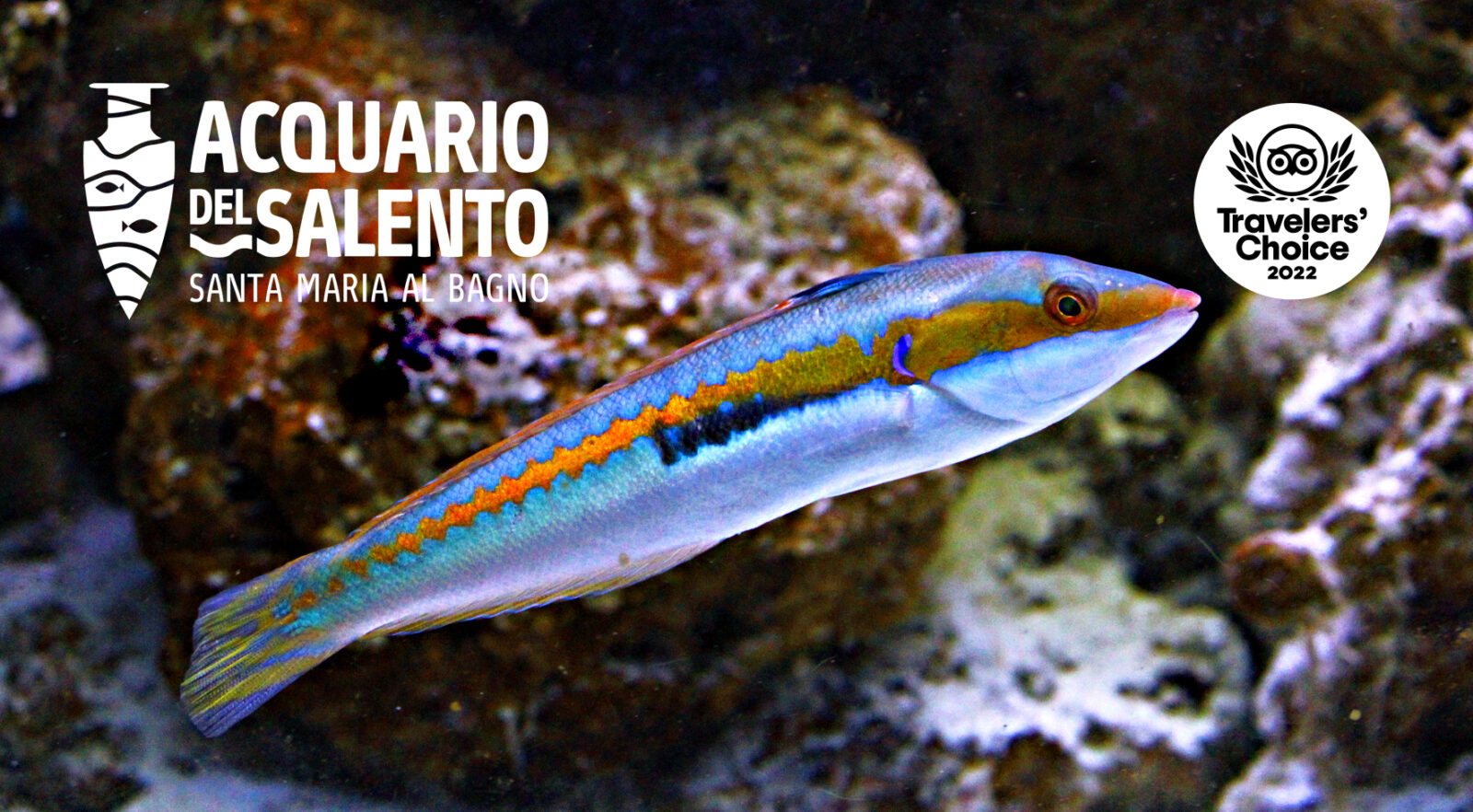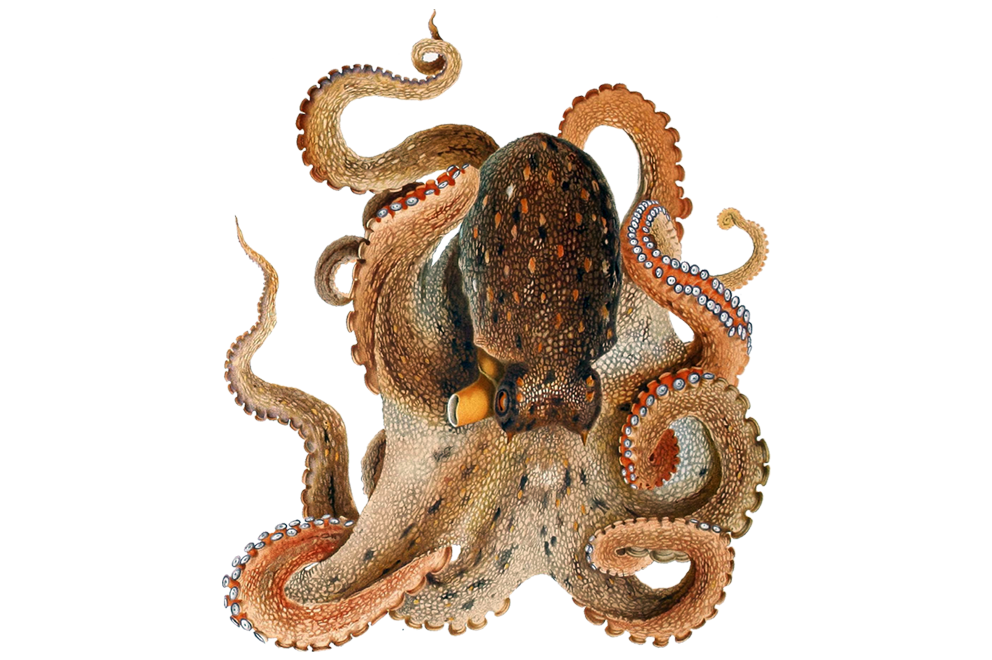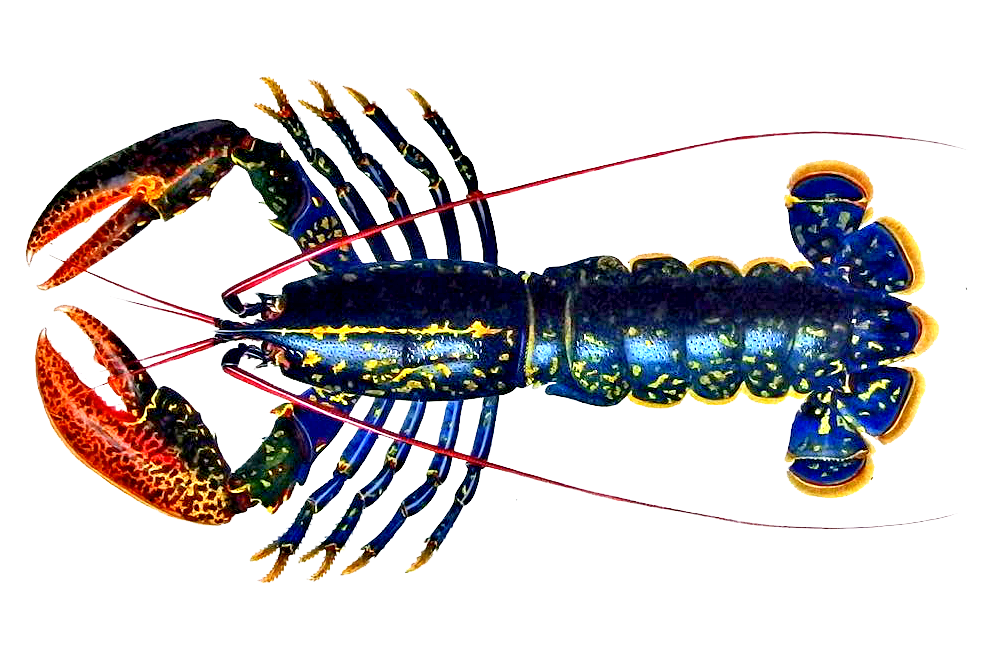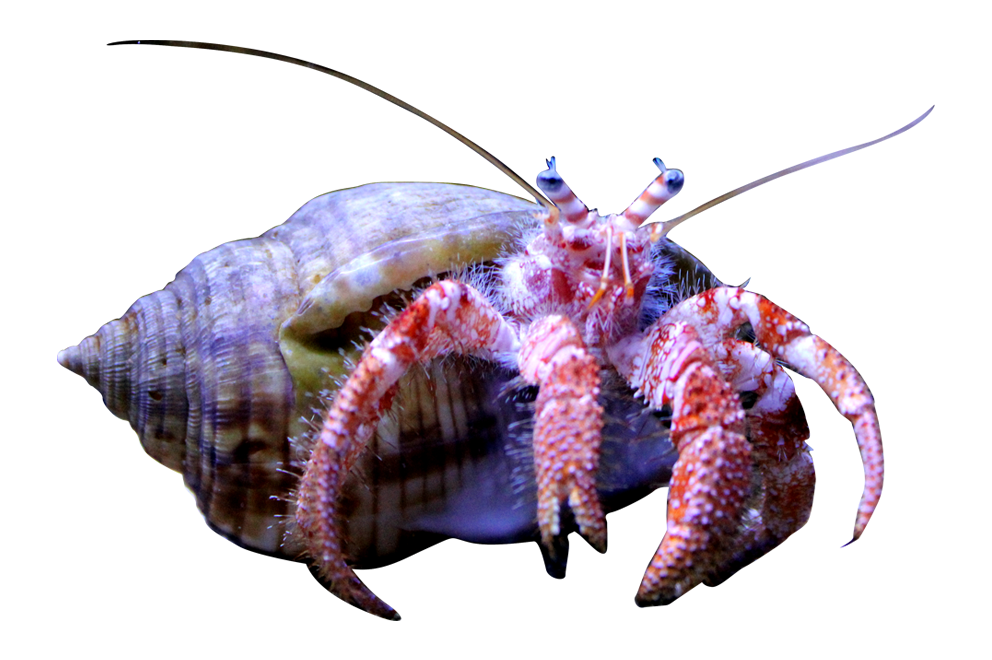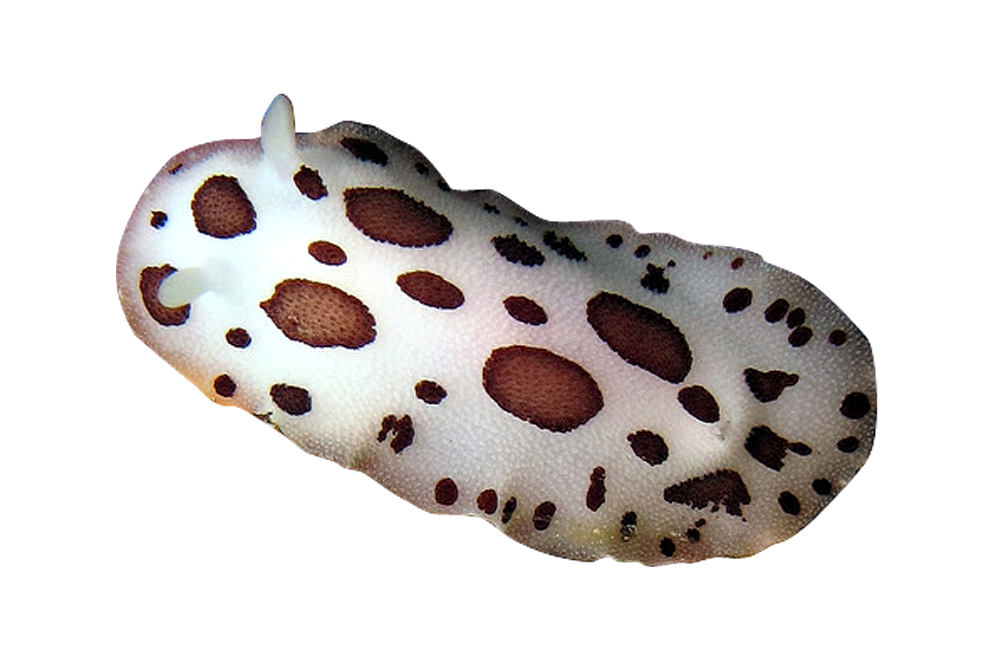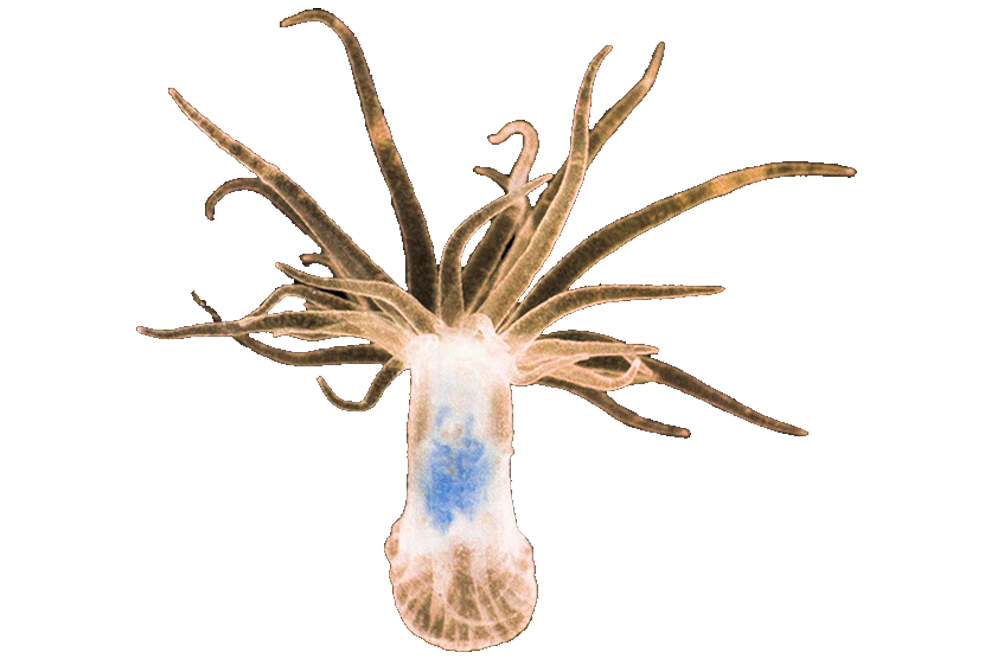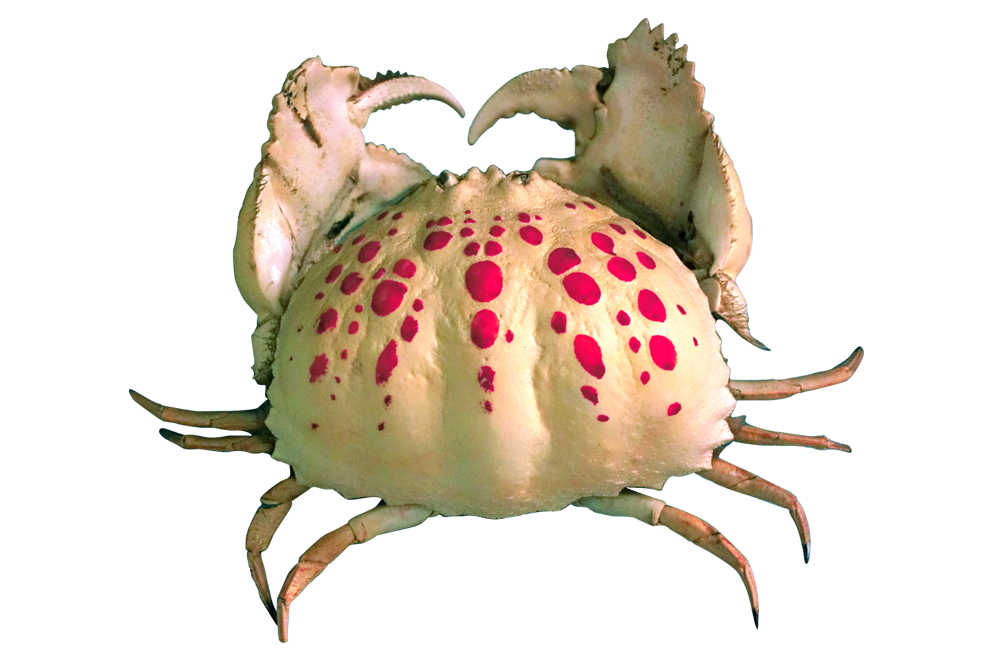THE OPEN SEA (tank 7/8/9/10/11/12/13/14)
The set-ups in the room and in the largest tank – copies of Roman amphorae and planking – display ancient sinking whose remains are still visible today on the seabed between the seaside resorts of Santa Maria al Bagno and Santa Caterina. In this room you can admire marine species that live up to 25 meters deep. Dusky grouper, common pandora, hermit crab, lobster, the very intelligent Octopus Vulgaris and large carnivorous starfish such as Marthasterias glacialis or Spiny starfish. The dusky grouper can grow to 1,5 meters long and weigh 60 kg. This is a juvenile fish. The spiny starfish are the largest starfish we have in the Mediterranean, and they can grow up to 85 cm across.
Common octopus > The common octopus belongs to the phylum of Mollusca, class of Cephalopoda, order of Octopoda. It’s an amazing animal, everybody knows its intelligence and sensitivity. It has three hearts, a vertebrate eyesight and a very complex neural system with a main brain in the head and eight other peripheral brains, one in each tentacle. In the tank of the octopus there is a vase, that is the piñata used to make the octopus hide when the doctor comes, because usually it doesn’t want to be visited.
Blue European Lobster > We do not know many things about the Blue european lobster, it’ too aggressive and territorial to be farmed unlike the american one, so no one has been able to observe it regularly. The blue lobster lives in the Mediterranean and its scientific name is Homarus gammarus, while the other one is called Homarus americanus. They can live for more than a century, some released lobsters whose age was calculated before releasing them 135-140 years. It is not easy to calculate the age, because at the beginning there is a growth curve: every kg corresponds to 15 years. However, it is not a fixed mathematical constant, therefore x-rays must be made on the animal’s soft body in search of small calcareous sediments to analyze and count the layers, such as the rings of a tree trunk.
Hermit crab > The hermit crab is a funny animal because it moves in a strange way, due to the shell that it is forced to use to protect its tail, the only soft part of the body not protected by a carapace. So any animal can bite and kill it, which is why it takes refuge in shells. The shell belongs to any snail which then died of old age and left it there on the seabed. Then, like all crabs, the hermit crab moults and grows, so at some point the shell becomes too small and it goes to look for a bigger one; then, it does the same thing over and over when it becomes bigger, for all its life. It is red-orange, with blue fibres on its carapace. It is very nice, but it does not grow much, its body reaches 9 cm.
Sea cow > Here we have the ocellated wrasses but there is also the sea cow, a black-and-white animal similar to a snail, and belonging to another order of gastropod molluscs. This order is called Nudibranchs, but they are real snails that have two antennae on the front and a tuft of gills that is strangely called lung on the back. The sea cows feeds on some types of sponges like the stony sponge. Sponges are poriferous animals, which means that they have pores (holes), through which they eat.
Corals > They are very small polyps and we usually don’t see them, but the colony they build. Even if it looks like a coloured plant, is still a colony, a city made of their outer hard exoskeleton, which overlap over the years, over the decades, over the centuries, to form coral reefs.
Glass anemones > The glass anemones are small but infesting, that is, they spread everywhere like weeds. It is not very easy to remove them mechanically, a tweezers can be counterproductive, since they spread all over the place, so you have to make three treatments a day of micro injections of vinegar or lemon juice.
Shamefaced crab > The Red-spotted Shamefaced crab lives in the Mediterranean on shifting bottoms from 15 to 400 meters deep. Typically sunken under the sand, from which only the eyes protrude, it feeds on molluscs.
